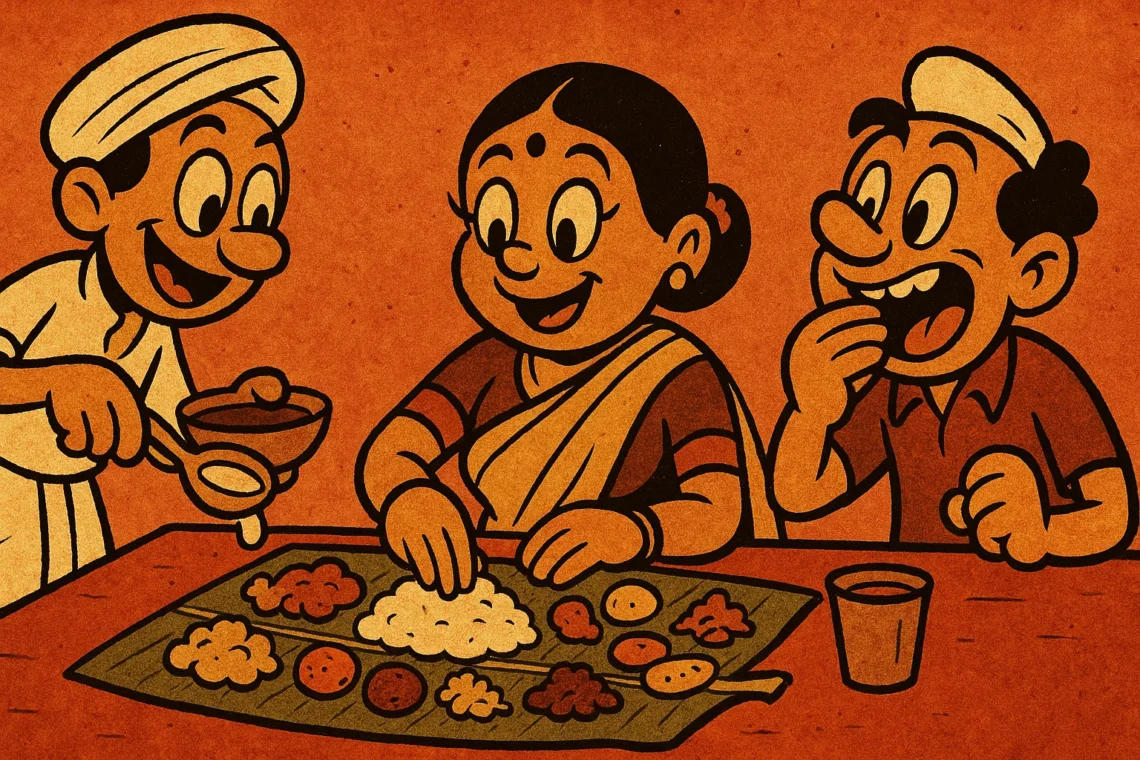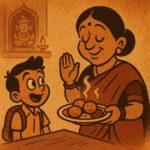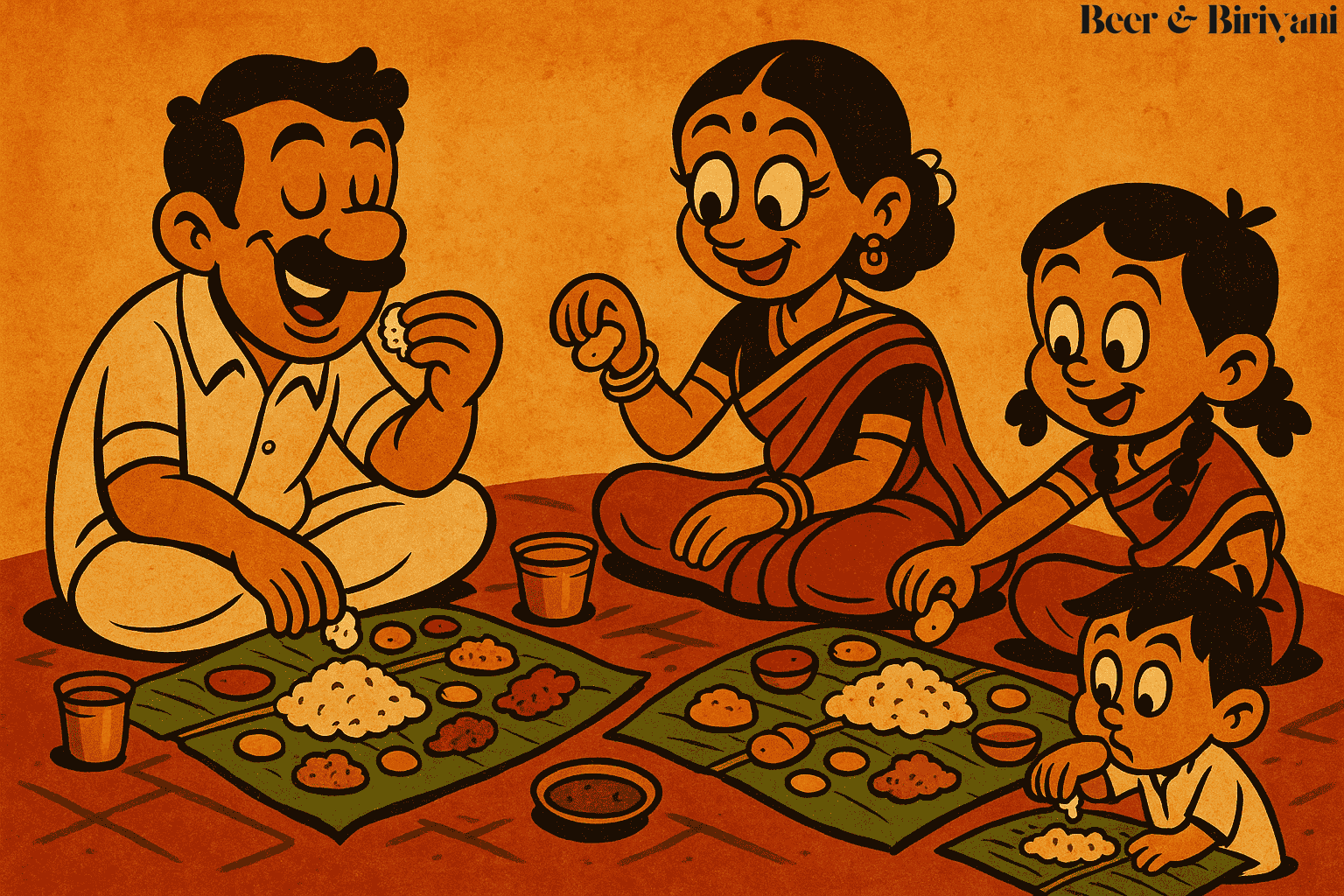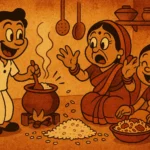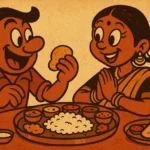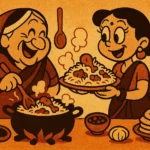Serving food on a banana leaf is not just a beautiful way to eat—it’s a ceremony. A choreography of placement, timing, and intention. It turns lunch into a ritual and dinner into an offering. Whether it’s a Tamil wedding, a Kerala sadya, or a quiet temple meal, there’s a rhythm to how it’s done. A banana leaf meal isn’t about what’s served—it’s about how it’s served. With order. With grace. And with a kind of unspoken wisdom that’s passed down through generations, not cookbooks.
The Leaf Comes First
The banana leaf is placed lengthwise in front of the eater, the wider end to the right. Yes, there’s a right way to lay a leaf. This isn’t just a surface—it’s a stage. You never use a torn leaf unless there’s no choice, and even then, it’s replaced with apology. It’s washed before use, usually with a splash of water and a quick wipe. Not just for hygiene, but to make the leaf glossy, pliable, and ready to receive what’s coming.
The Order Is Not Optional
The first items to land are the pickles, salt, and maybe a sliver of jaggery—set in the top left corner. Next comes the podi or chutney, followed by the dry vegetable dishes—poriyal, thoran, or mezhukkupuratti, depending on the region. These are placed methodically from left to center. Fried items like vada or banana chips are added soon after, crisp and waiting.
Then come the wet items—kootu, sambar, rasam—all poured one at a time, in stages, as the meal progresses. Rice is served last but also replenished the most. It’s mounded in the center, never flattened. A ladle of ghee follows. Then the sambar. Later, a smaller ladle of rasam. And finally, if you’ve made it this far, payasam—poured either in a corner of the leaf or served in a katori on the side.
The Server Watches Closely
A good server doesn’t ask, “Do you want more?” They watch your eyes, your hand hovering near the plate, the pace of your eating. They step in before you notice you’re running out of kootu. They know when to refill rice and when to leave you alone. And they always, always serve with their right hand—palm open, never rushed, never flinging. Because this isn’t just service. It’s hospitality elevated to its highest form.
The Act of Eating Is Participatory
You eat with your right hand, of course. No spoons unless you’re ill or extremely new to the experience. You mix rice with sambar or rasam, scoop it up in practiced handfuls, and try not to let it reach your wrist. You don’t waste. You don’t let food fall off the leaf. And if something does, you quickly fold it in like a small act of repentance.
The banana leaf is not just a plate. It’s a boundary. A signal. It tells the server where to place what. It absorbs heat. It releases a subtle aroma when touched by hot rice or ghee. It teaches you portion control. And it offers a kind of quiet restraint—even when the food is abundant, the space is respected.
Ending with Respect
When the meal is done, you fold the leaf toward you—if it’s a celebration, an auspicious occasion, or a meal of gratitude. If it’s a meal after a funeral or during mourning, the leaf is folded away from you. This small gesture carries centuries of cultural memory, understood without explanation.
And then you wash your hand, lean back, and maybe—just maybe—go for a paan or a nap. Because a banana leaf meal is not something you eat and forget. It’s something you experience. Something that stays with you. On your fingertips. In your memory. In the quiet reverence of a leaf that once held more than just food—it held a way of life.
Serving a banana leaf meal isn’t just about arranging dishes. It’s about creating space for grace. And that’s what turns a meal into a moment worth remembering.
Born in Mumbai, now stir-frying feelings in Texas. Writes about food, memory, and the messy magic in between — mostly to stay hungry, sometimes just to stay sane.

